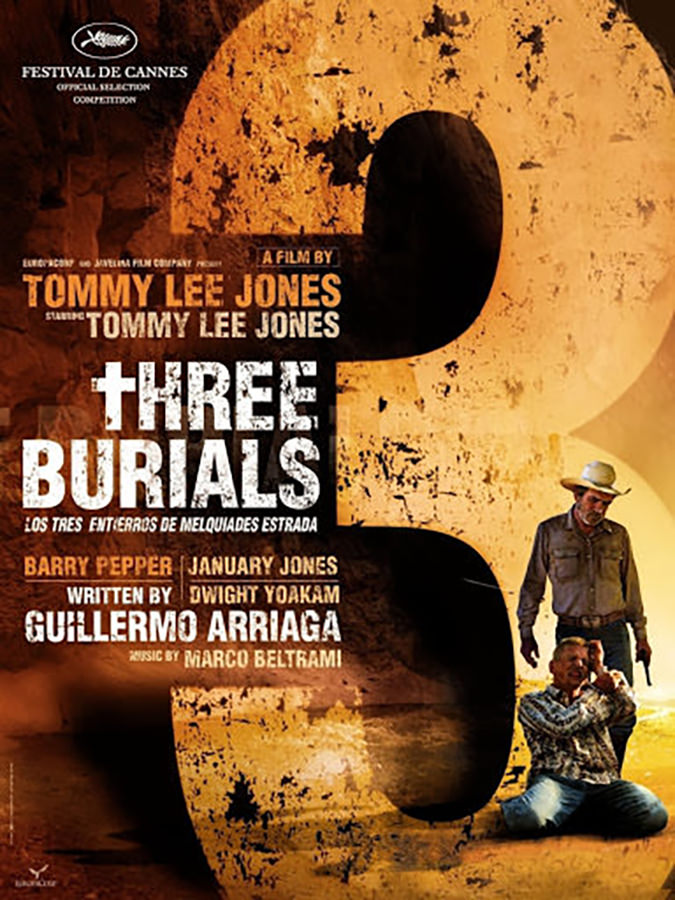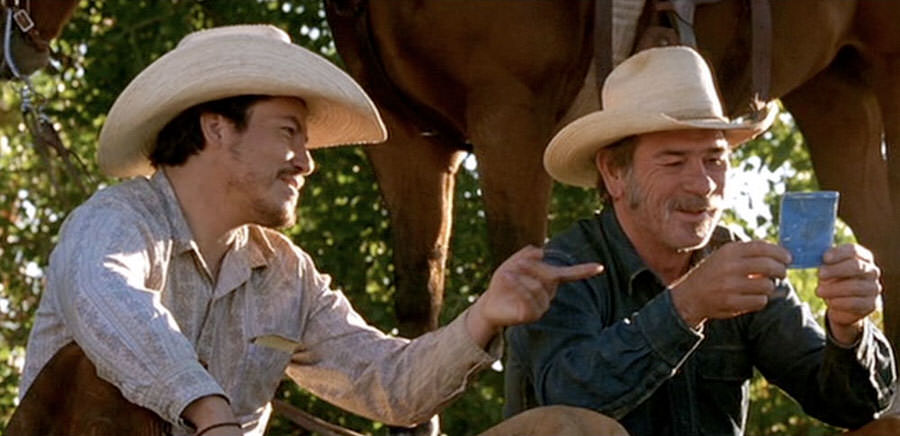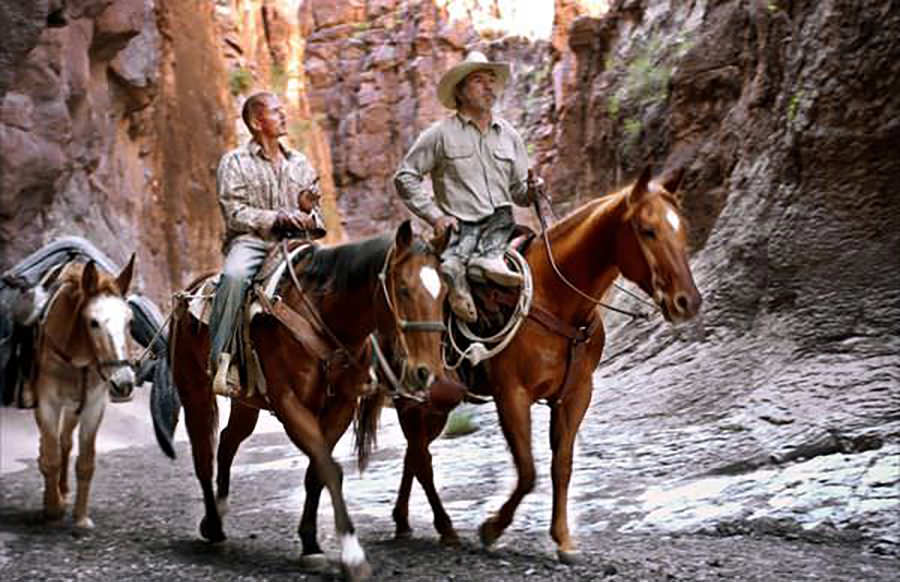The Three Burials of Melquiades Estrada
Directed by Tommy Lee Jones (2005) ***
 Produced by a French company, EuropaCorp, written by a Mexican novelist, Guillermo Arriaga, and directed by an American, Tommy Lee Jones, The Three Burials of Melquiades Estrada is an international effort, a modern western which, shorn of some of its topical details, could have taken place any time in the last two hundred years.
Produced by a French company, EuropaCorp, written by a Mexican novelist, Guillermo Arriaga, and directed by an American, Tommy Lee Jones, The Three Burials of Melquiades Estrada is an international effort, a modern western which, shorn of some of its topical details, could have taken place any time in the last two hundred years.
As Alejandro Iñárritu and Guillermo Arriaga’s film Amores Perros (2000, and also reviewed on Film Review Central) was influenced by the time and perspective-fragmenting methods of William Faulkner, The Three Burials uses as its template Faulkner’s 1930 novel, As I Lay Dying. As Addie Bundren’s dead body was trundled across Mississippi by her poor family, fulfilling her request to be buried where she was born, so Melquiades Estrada’s body is similarly carried, though treated by various people in such bizarre and uncaring ways the film sometimes veers toward wicked comedy. (Tommy Lee Jones also gave each cast member a copy of Albert Camus’ The Stranger to read.)
Tommy Lee Jones plays Pete Perkins, a Texan rancher and best friend of the undocumented immigrant cowboy Melquiades (Julio Cedillo). Melquiades at one point shows Pete a photo of his wife and kids in Jiménez, Mexico, and asks to be buried there if he dies in the U.S. The event feared for comes true when border patrol agent Mike Norton (Barry Pepper) shoots Melquiades accidentally, out of ignorance and fear.  Norton is a recent transplant to the area with his out-of-place wife, Lou Ann (a pre-Betty Draper January Jones) and has already come under fire from his superiors for his violent tactics arresting border crossers (one such event, when he breaks a lady’s nose, will come to be duly repaid).
Norton is a recent transplant to the area with his out-of-place wife, Lou Ann (a pre-Betty Draper January Jones) and has already come under fire from his superiors for his violent tactics arresting border crossers (one such event, when he breaks a lady’s nose, will come to be duly repaid).
The local sheriff, Belmont (Dwight Yoakam) doesn’t much care about the incident and would prefer to ignore it, but his occasional mistress, Rachel (Melissa Leo) overhears a conversation she relates to Pete (who she also sleeps with) and Pete, now armed with the name of the murderer, is determined to both exact revenge and fulfill Melquiades’ dying wish.
The Three Burials‘ first third chooses to tell the story out of order, so we discover that events appearing to happen “now” took place in the past. I see no compelling reason why this method was used, and the film is better for it when it settles on a straightforward narrative. Once Norton is confronted by Pete, The Three Burials becomes a picaresque journey, sometimes funny, sometimes surreal. Levon Helm, of The Band, has a cameo as a blind Mexican settler who spends his time radio listening. Belmont makes a half-hearted attempt to capture Pete but gives up the chase and takes a vacation.
 Jones, with cinematographer Chris Menges, uses various Texan locations to stark, painterly advantage. The settings compliment the leisurely, quirky happenings with dusty sunlight and broad vistas. Before The Three Burials comes to its ironic and quiet conclusion, though, much time (the film is over two hours long) is devoted to unnecessary subplots: Belmont’s relationship with Rachel, Rachel’s relationship with Lou Ann, Lou Ann’s longing for Cincinnati. They hold the film back from greatness.
Jones, with cinematographer Chris Menges, uses various Texan locations to stark, painterly advantage. The settings compliment the leisurely, quirky happenings with dusty sunlight and broad vistas. Before The Three Burials comes to its ironic and quiet conclusion, though, much time (the film is over two hours long) is devoted to unnecessary subplots: Belmont’s relationship with Rachel, Rachel’s relationship with Lou Ann, Lou Ann’s longing for Cincinnati. They hold the film back from greatness.
I was reminded, when watching, of tighter and more driven tales of neo-western passion and anger, such as John Huston’s The Treasure of the Sierra Madre (1948), which centered on only three desperate individuals, and Lonely Are the Brave (1962), based by Donald Trumbo on the novel by Edward Abbey, which again centers on three entwined individuals, one an anarchic dissenter, in New Mexico. Three Burials has sadness and retribution but could have used some of these fore-bearers’ sharpness of focus and anger.
Three Burials was Tommy Lee Jones’ first attempt at feature film directing. He corrected its narrative flaws in the next western feature film that he directed, The Homesman (2014).
—Michael R. Neno, 2020 October 6